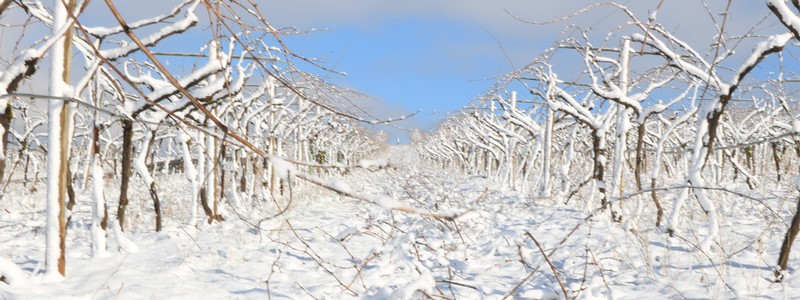Vines During Winter Dormancy

Although dormancy in the vineyard can make the vines seem stagnant and lifeless, there is actually a lot of activity happening beneath the surface. A sleeping vine is still a working vine! The dormancy phase helps vines tolerate the cold days of winter while also preparing them for the bud break, flowering and rapid cane growth that occurs in the spring.
Once harvest is over and all clusters have been picked, the vines move their attention to preparing for the cold winter ahead. The vines begin this process by growing new roots, also known as root flush, to absorb as many nutrients from the soil as possible while their remaining leaves continue photosynthesis. As the temperatures begin to drop, the water and nutrients within the vine move into the trunk and roots, causing the canes and cordons to become cold and develop hardiness (turning brown in the process). Sugars and protein complexes store themselves in the trunk creating cryoprotectants, a substance that prevents the freezing of the plant tissue. This storage of carbohydrates gives the vines the energy necessary for bud break in the spring.
Once the temperatures steadily increase, the vines once again show signs of life. The stored sugar in the trunk turns to sap and moves through the vine, escaping from the open pruning cuts — a clear signal that bud break is only days away. As bud break occurs, the vines are dotted with the first sign of green and will begin growing rapidly thereafter.